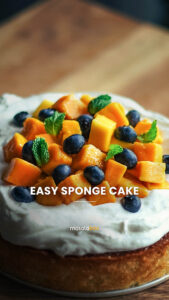As a home cook, having the right kitchen gadgets can make all the difference in the world. From speeding up meal prep to simplifying clean-up, these gadgets can help make cooking a breeze. Here are the top five kitchen gadgets that every home cook needs.
Instant Pot
The Instant Pot is a multi-purpose pressure cooker you can use to cook a variety of meals quickly and easily. It can be used to cook rice, beans, stews, soups, and even desserts. The Instant Pot saves time and energy, and it’s perfect for busy weeknights when you need to get dinner on the table quickly.
Immersion Blender
An immersion blender is a handheld blender you can use to blend soups, sauces, and smoothies directly in the pot or container. It’s more convenient than a traditional blender because you don’t have to transfer the contents to a separate blender jar, and it’s easier to clean.
Kitchen Scale


A kitchen scale is an essential gadget for any home cook who wants to be precise with their measurements. Measuring ingredients by weight rather than volume can ensure accuracy in recipes and help achieve consistent results. A kitchen scale is especially useful for baking recipes, where precise measurements are critical.
Mandoline Slicer
A mandoline slicer is a kitchen gadget you can use to slice fruits and vegetables quickly and evenly. It’s perfect for slicing potatoes for chips or slicing cucumbers for salads. A mandoline slicer can also be used to julienne vegetables or make crinkle cuts.
Food Processor
A food processor is a versatile kitchen gadget you can use to chop, slice, shred, and puree a variety of foods. It can be used to make hummus, pesto, salsa, and even bread dough. A food processor can save time and effort in the kitchen and make it easy to prepare healthy meals at home.
Also read: Top 5 Best Utensils For Cooking Food: A Kitchen Must-Haves
And here you can learn how to make earrings with your own hands.
Conclusion
In conclusion, these top five kitchen gadgets can make cooking at home easier, faster, and more enjoyable. The Instant Pot and immersion blender are perfect for making quick and easy meals, while the kitchen scale is essential for precise measurements. The mandoline slicer and food processor are perfect for prepping fruits and vegetables and creating a variety of dishes. With these kitchen gadgets on hand, home cooks can take their cooking to the next level and enjoy delicious, healthy meals at home.








